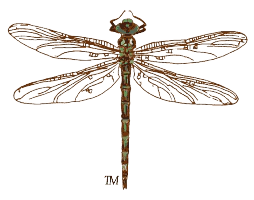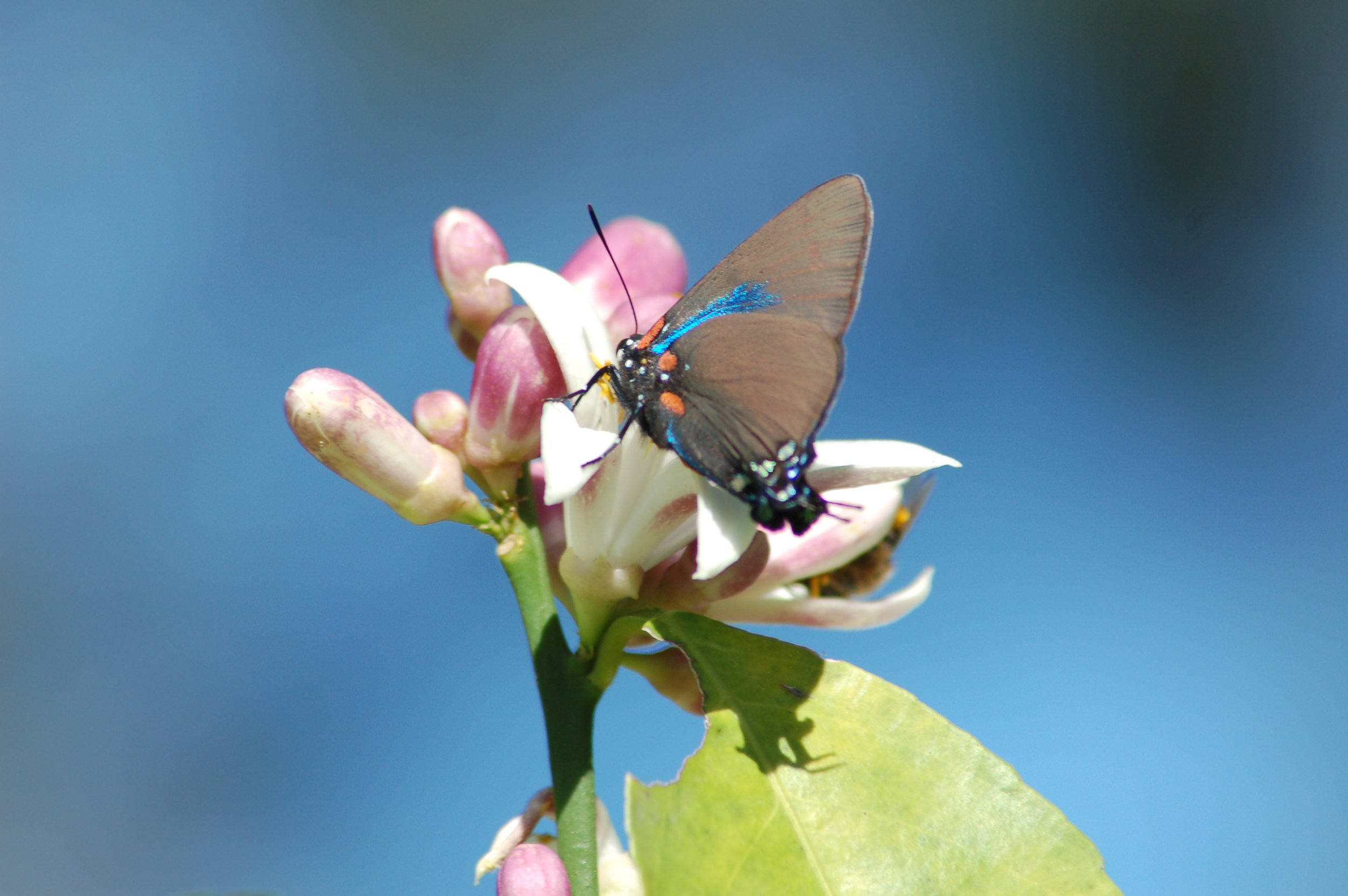What’s That Attached to My Tree?
Photo courtesy Betsy Cross
“When one plants a tree they plant themselves. Every root is an anchor, over which one rests with grateful interests, and becomes sufficiently calm to feel the joy of living.” — John Muir
Christine Middleton
We value our trees—and rightfully so. Trees take a long time to mature. Or, as a much-quoted Chinese proverb puts it: “One generation plants the tree, and another gets the shade.” Trees provide a host of benefits. As discussed in an earlier HELM Network News article, Trees Are More Than Pretty, the trees growing on our property give us welcome shade and offer critical habitat for the wildlife we love. They also protect our water resources and clean the air we breathe. Through photosynthesis, trees absorb carbon dioxide and other greenhouse gases and release oxygen. According to the U.S. Department of Agriculture, “One acre of forest absorbs six tons of carbon dioxide and puts out four tons of oxygen. This is enough to meet the annual needs of 18 people.”
So when we spot something attached to one of our trees—especially one that looks like it’s struggling—it’s natural to worry. But don’t jump to conclusions. Three organisms—ball moss, mistletoe, and lichen—are often wrongly blamed. Rather than harming trees, they’re usually just taking advantage of a bad situation. And in the process, they provide a lot of benefits to wildlife, especially birds. Here’s the rest of the story.
Ball Moss – A Harvester of Thin Air
Ball moss (Tillandsia recurvata) is often seen hanging from dead or dying limbs—and is frequently demonized. An unscrupulous tree trimmer once tried to convince me that ball moss was killing the large, ancient live oak in my front yard. Don’t fall for that moneymaking scheme. Ball moss is an epiphyte, which means it attaches to trees but doesn’t draw any resources from them. Instead, it pulls carbon dioxide and minerals from the air. If you want proof, just look around: ball moss also grows on power poles, fences, and other non-living surfaces.
Black-and-white warblers move quickly up and down limbs foraging for grubs and insects. This one is probing the ball moss for insects and spiders. Photo courtesy Betsy Cross
Despite the name, neither ball moss nor its cousin, Spanish moss (Tillandsia usneoides), is a true moss. Both are flowering plants in the bromeliad family—the same family as pineapples! While ball moss has roots, they serve only to anchor it to surfaces, not to absorb water. It’s more likely to appear on rough-barked species like live oaks and cedar elms. Trees with smooth or peeling bark, like crape myrtles or pecans, are less prone to host it.
The round rosettes we see are actually colonies of individual plants—usually between 2 and 60. If you look closely at the right time, you’ll spot tiny, lavender, one-petaled flowers. Once pollinated, they form brown seed pods packed with fluffy seeds that travel by wind—sometimes hundreds of yards—to start new colonies.
So why is ball moss often found on bare branches? Simple: those branches, especially in the lower canopy of live oaks, often die from lack of sunlight. Ball moss likes low-light, humid conditions, so that part of the tree provides a perfect environment. And stressed trees tend to have more of those dead limbs—hence, more ball moss.
But here’s the good news: ball moss helps capture and fix nitrogen. When branches fall, the nitrogen-enriched material fertilizes the ground below. Ball moss also filters pollutants from the air, making it a useful—and inexpensive—indicator of urban air quality.
And that’s not all. The clusters provide excellent hiding places for insects and spiders. And who loves both trees and insects? Birds! Even seed-eating birds rely on protein-rich bugs to feed their nestlings. Ball moss is also a hunting ground for lizards and frogs. And hummingbirds love it—not only for foraging but for nest-building. They collect spiderwebs from the moss to hold their nests together, allowing for expansion as chicks grow. Given their size and color, these nests are nearly impossible to spot when nestled in a patch of ball moss. Can you find the nest in the photo?
A hummingbird nest is attached to a pencil-sized twig in this tangle of ball moss and spider web. Can you spot it? Photo courtesy Betsy Cross
Mistletoe – A Not-So-Harmful Parasite
The word “mistletoe” might bring to mind Christmas traditions and songs like I Saw Mommy Kissing Santa Claus… Worldwide, there are over a thousand different species of mistletoe. The one most common in Central Texas is oak mistletoe (Phoradendron leucarpum). Like ball moss, mistletoe often gets blamed for a tree’s decline. And while it can play a role in weakening a tree, it’s rarely the main cause of its demise. In fact, the two often live in peaceful coexistence for years on end.
Photo courtesy Christine Middleton
Mistletoe is considered a hemiparasitic shrub. The “hemi” part refers to the fact that mistletoe’s evergreen leaves can photosynthesize, producing the sugars it needs to grow and reproduce. But since mistletoe grows on trees instead of in soil, it needs another source for water and minerals. So instead of pulling those from the air like ball moss, mistletoe taps into the tree’s vascular system to “steal” them.
Unlike ball moss, mistletoe loves direct sunlight. That’s why mistletoe is usually seen growing high in the crown of trees and is often only visible in winter. Its small yellow-green flowers are pollinated by both insects and wind. Mistletoe is dioecious, meaning some plants produce male flowers and others female. Only the females produce berries, which contain seeds surrounded by a sticky, gelatinous pulp that helps them cling to bark and begin rooting.
Birds like cedar waxwings, bluebirds, and cardinals eat mistletoe berries—especially in winter when other food is scarce. As they feed, the sticky pulp clings to their beaks and feet, helping to spread the seeds. When swallowed, the seeds can pass through a bird’s digestive system and be dispersed in droppings. Mistletoe is also the sole host plant for caterpillars of the Great Purple Hairstreak butterfly.
Can you spot the two birds in this tree? They appear to be a pair of bluebirds. Photo courtesy Christine Middleton
Great Purple Hairstreak butterfly Photo courtesy Beth Ramey
Great Purple Hairstreak butterfly Photo courtesy Beth Ramey
While birds benefit from mistletoe, the berries are poisonous to humans, pets, and cattle. However, both deer and livestock can eat the leaves. After a strong windstorm, you might spot deer foraging on mistletoe that’s been knocked to the ground. During the 1950s drought in Texas, some ranchers reportedly survived by using long poles to pull mistletoe from trees to feed their starving herds.
Lichen – A Living Community
Unlike ball moss and mistletoe, lichen isn’t a plant at all. It’s a plant-like community made up of a fungus plus a photobiont (algae and/or cyanobacteria) that attaches to trees, rocks, and other surfaces. The fungal filaments form the outer layer of the lichen and make up about 80% of its body. The fungus provides structure and protection and absorbs water and minerals from rain or the air. But fungi are heterotrophic, meaning they can’t make their own food. That’s where the algae or cyanobacteria come in—they photosynthesize and produce sugars, feeding both partners in this mutual relationship. This collaboration is what enables fungi and algae to thrive in environments where neither could survive on their own.
Unlike harmful fungi like oak wilt, lichen doesn’t damage trees. Like mistletoe, it’s opportunistic. Lichen often appears on the trunks and limbs of trees that are already dead or in decline, which can give the impression that it caused the problem. But it didn’t. Increased sunlight from partial defoliation creates better conditions for lichen to take hold. As the bark on a stressed tree becomes more brittle, cracks develop enabling lichens to more easily attach and stay in place.
Lichen montage courtesy Christine Middleton
Estimates for the number of lichen species worldwide range from 15,000 to 30,000. Many grow high in tree canopies and go unnoticed. Events like the 2023 ice storm that hit Austin offer a rare chance to observe them up close—that’s when the lichen in these photos was spotted. So next time you’re clearing downed branches after a storm, pause for a moment and take a closer look at these fascinating lifeforms.
From a wildlife perspective, lichen provides many of the same benefits as ball moss. It’s another great hiding spot for insects and spiders and a favored foraging area for birds and other insect-eaters. Birds from hawks to hummingbirds use lichen to build their nests. Hummingbirds, in particular, are drawn to lichen—not only as a building material but also as a reliable source of spiderwebs.
A nesting hummingbird gathers lichens to place on her nest. Photo courtesy Betsy Cross
Lichens help to camouflage hummingbird nests. This nest is almost indistinguishable from the branch it sits on. Photo courtesy Betsy Cross
Like ball moss, lichen helps scrub pollutants out of the air. But different species vary in sensitivity. That’s why lichen is considered an excellent bioindicator of air quality. Scientists monitor changes in lichen population and diversity to assess pollution levels in an area. Other living indicators include butterflies, frogs, toads, and nematodes—but lichen are often easier to sample and respond more quickly to environmental changes.
Request a Fall HELM Visit
Understanding what’s actually happening on your land can help you make more informed land management decisions. Want to know more about the things you’re seeing and how they interact? As part of our HELM (Habitat Enhancing Land Management) program, we offer property visits to discuss land stewardship. Landowners learn about sustainable practices designed to enhance wildlife habitats, improve soil, effectively manage invasive species, and much more.
We’re taking a summer break—but we’ll resume visits across Hays County this fall and are continuing to accept requests. If you or a neighbor would like a HELM team visit, fill out the request form here. And please help spread the word!
The HELM Network News is a periodic feature in The Hays Humm, the online magazine of the Hays County Chapter of Texas Master Naturalists™. You can read the latest issue—and explore past articles—at www.beautifulhayscounty.org.
Following publication, HELM Network News articles are also sent directly to a mailing list. You can sign up at this link to get articles sent directly to your inbox.
Photo courtesy Christine Middleton











